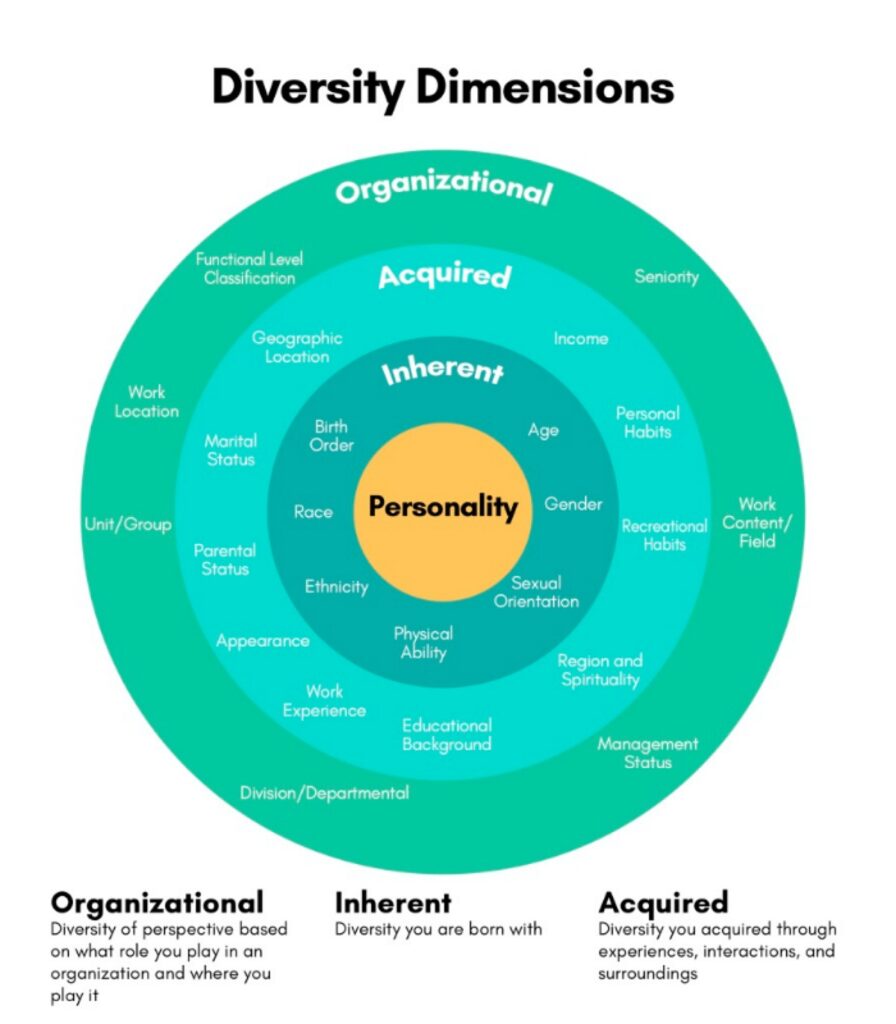Communicating Diversity, Equity and Inclusion Through Storytelling
Strategies for communicating diversity, equity and inclusion through storytelling throughout our organizations.
Chief Diversity Officers and other team members focused on increasing inclusion and belonging in corporate cultures have some of the most critical roles today. You’re the cartographers and guides on your company’s continuous DEI journey — a process that never ends. Whether your organization has just begun its inclusion work, or DEI has been a priority for decades, organizational storytelling is necessary for communicating a company’s real commitment to diversity, progress towards change, and presence of inclusion.
Two Requirements for Telling a Brand’s DEI Story
Showing employees, candidates, customers and more audience your DEI story is complex and sensitive. For simplicity’s sake, every organization’s DEI story has two key requirements:
1. The current DEI story: Your organization needs to accurately communicate where your culture stands today in providing inclusion, belonging, allyship, and advocacy for its people.
2. Your DEI plans: A realistic and clear sharing of your organization’s plans for improving upon its current levels of diversity, equity, anti-discrimation, and inclusion for all, especially for members of underrepresented groups.
Your Widest Range of Storytellers
Every company must communicate both of these two requirements by sourcing stories from all over your organization, from every possible perspective. This is a point we stress again and again throughout this resource, but it’s especially important when developing compelling DEI content for use by all company stakeholders.
Yes, you will need stories from an array of backgrounds, gender identifications, and locations. But our general ideas of “diversity” — race, ethnicity, geography — are just the beginning. We must think about diversity in multiple dimensions,, as illustrated by veteran DEI leaders Lee Gardenswartz and Anita Rowe in their Diversity Dimensions model.
Look across your organization and consider the many different perspectives across all these dimensions:
- Inherent: race, ethnicity, heritage, age, gender, sexual orientation, physical ability
- Acquired: location, experience, education, income, parental status
- Organizational: work site, department, team, function, seniority, leadership status
Which perspectives, from each intersection of these dimensions, would you be able to find the most of from your employees? Which team member voices would be the most challenging to find?
The DEI Expert Assessment
But before you begin making a list of all the storytellers you need to round up, put your internal research and DEI expertise to use. Make an assessment of your organization’s progress on the DEI journey when contrasted with society as a whole. Some of the questions you may ask include …
- Does your company have more or less women in leadership than other companies in your industry or size?
- Is your organization ahead or behind others in its regions for employing members of underrepresented racial or ethnic groups?
- Has your company sponsored employee resource groups (ERGs) for a variety of communities?
- What accommodations has your organization made for employees who are physically differently-abled or possess neurodivergencies?
- Has your organization established hiring initiatives internally or communicated them externally? What is their success with these goals?
Telling Your Current DEI Story and Your Future Plans
Now, let’s put it all together and combine your two levels of data:
- People: the potential storytellers in your organization, sourced from all three diversity dimensions
- Progress: the realistic audit of your organization’s level of development in its DEI evolution
Together, these data sets will determine the most accurate way to present your DEI story in your organizational storytelling. Every company needs to address both but your data will notify which should receive the most attention in your content.
Stories of Inclusion and Diversity, Brought to Life
If your company is an industry leader in levels of inherent, acquired and organizational diversity, with a history of progressive inclusion practices, tell that story. Highlight the ways your culture is excelling in ways its competitors are not when it comes to providing belonging for underrepresented groups and hiring diverse talent. Additionally, your overall organizational storytelling should highlight storytellers sharing specific examples of how they have experienced inclusion and support within the culture, and how they have benefitted from your company’s DEI practices.
For example, Aronson LLC, a national public accounting and consulting firm, has a documented history of diverse leadership. These leaders paved the way for younger accounting professionals like them to follow, inside and outside of the firm. And, that tradition continues today. We helped them capture stories celebrating this tradition to share with their talent audiences.
Stories Expressing DEI Commitment
If your company is not a leader, your organizational storytelling content can weigh more heavily on your in-progress transformation towards increased diversity, equity and inclusion. If that’s the case, you’re not alone and your efforts and plans provide a compelling story. As DEI leaders, you know that there is an obligation to never paint an inaccurate picture of diversity or inclusion in culture, but neither should we ignore the progress our organizations need to achieve.
Here, your storytellers are your team members responsible for driving this work at your company, like influencers and leaders in talent acquisition and diversity and inclusion. Sourcing stories from a variety of leadership voices and change agents passionate about increasing DEI is also important. These leaders should not be restating corporate EEO statements, but communicating specific strategies for bringing about real, measurable DEI progress.
Integrating Both Priorities
Here’s an example of organizational storytelling content that addresses both DEI story priorities. Stories Inc. helped Capital One uncover unique stories from team members that reflect how identity, perspective, inclusion, and purpose shape the Capital One employee experience in 2022.
These stories include a gay dad who felt supported by the company when adopting his two children, as well as leadership team members sharing how they’re seeking to bridge any gaps in their culture of inclusion and belonging.
Every company today has a responsibility to share proof of DEI and strive to build a better workplace for all. With organizational storytelling, you can communicate both of these DEI goals in an integrated strategy. The stories of lived inclusion and plans to increase diversity that you’ll uncover will support your courageous and critical work.
Learn more about using DEI stories throughout your company in our guide!


